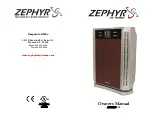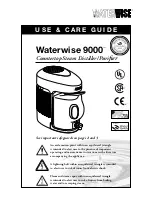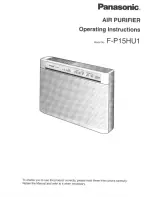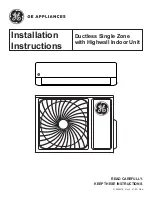
3
touch the electrostatic filter, if the unit is so equipped.)
- There is risk of physical injury, electric shock, or product failure.
CAUTION
Installation
• Always check for gas (refrigerant) leakage after installation or repair
of product.
- Low refrigerant levels may cause failure of product.
• Do not install the product where the noise or hot air from the out-
door unit could damage the neighborhoods.
- It may cause a problem for your neighbors.
• Keep level even when installing the product.
- To avoid vibration or water leakage.
• Do not install the unit where combustible gas may leak.
- If the gas leaks and accumulates around the unit, an explosion
may result.
• Use power cables of sufficient current carrying capacity and rating.
- Cables that are too small may leak, generate heat, and cause a
fire.
• Do not use the product for special purposes, such as preserving
foods, works of art, etc. It is a consumer air conditioner, not a preci-
sion refrigeration system.
- There is risk of damage or loss of property.
• Keep the unit away from children. The heat exchanger is very
sharp.
- It can cause the injury, such as cutting the finger. Also the dam-
aged fin may result in degradation of capacity.
• When installting the unit in a hospital, communication station, or
similar place, provide sufficient protection against noise.
- The inverter equipment, private power generator, high-frequency
medical equipment, or radio communication equipment may cause
the air conditioner to operate erroneously, or fail to operate. On
the other hand, the air conditioner may affect such equipment by
creating noise that disturbs medical treatment or image broadcast-
ing.
• Do not install the product where it is exposed to sea wind (salt
spray) directly.
- It may cause corrosion on the product. Corrosion, particularly on
the condenser and evaporator fins, could cause product malfunc-
tion or inefficient operation.
Operation
• Do not use the air conditioner in special environments.
- Oil, steam, sulfuric smoke, etc. can significantly reduce the per-
formance of the air conditioner or damage its parts.
• Do not block the inlet or outlet.
- It may cause failure of appliance or accident.
• Make the connections securely so that the outside force of the
cable may not be applied to the terminals.
- Inadequate connection and fastening may generate heat and
cause a fire.
• Be sure the installation area does not deteriorate with age.
- If the base collapses, the air conditioner could fall with it, causing
property damage, product failure, or personal injury.
• Install and insulate the drain hose to ensure that water is drained
away properly based on the installation manual.
- A bad connection may cause water leakage.
• Be very careful about product transportation.
- Only one person should not carry the product if it weighs more
than 20 kg.
- Some products use PP bands for packaging. Do not use any PP
bands for a means of transportation. It is dangerous.
- Do not touch the heat exchanger fins. Doing so may cut your fin-
gers.
- When transporting the outdoor unit, suspending it at the specified
positions on the unit base. Also support the outdoor unit at four
points so that it cannot slip sideways.
• Safely dispose of the packing materials.
- Packing materials, such as nails and other metal or wooden parts,
may cause stabs or other injuries.
- Tear apart and throw away plastic packaging bags so that children
may not play with them. If children play with a plastic bag which
was not torn apart, they face the risk of suffocation.
• Turn on the power at least 6 hours before starting operation.
- Starting operation immediately after turning on the main power
switch can result in severe damage to internal parts. Keep the
power switch turned on during the operational season.
• Do not touch any of the refrigerant piping during and after opera-
tion.
- It can cause a burn or frostbite.
• Do not operate the air conditioner with the panels or guards re-
moved.
- Rotating, hot, or high-voltage parts can cause injuries.
• Do not directly turn off the main power switch after stopping opera-
tion.
- Wait at least 5 minutes before turning off the main power switch.
Otherwise it may result in water leakage or other problems.
• Auto-addressing should be done in condition of connecting the
power of all indoor and outdoour units. Auto-addressing should also
be done in case of changing the indoor unit PCB.
• Use a firm stool or ladder when cleaning or maintaining the air con-
ditioner.
- Be careful and avoid personal injury.
• Do not insert hands or other objects through the air inlet or outlet
while the air conditioner is plugged in.
- There are sharp and moving parts that could cause personal injury.
!
ENGLISH
1,MFL67221438,영영 2018. 10. 4. 영영 11:29 Page 3




































